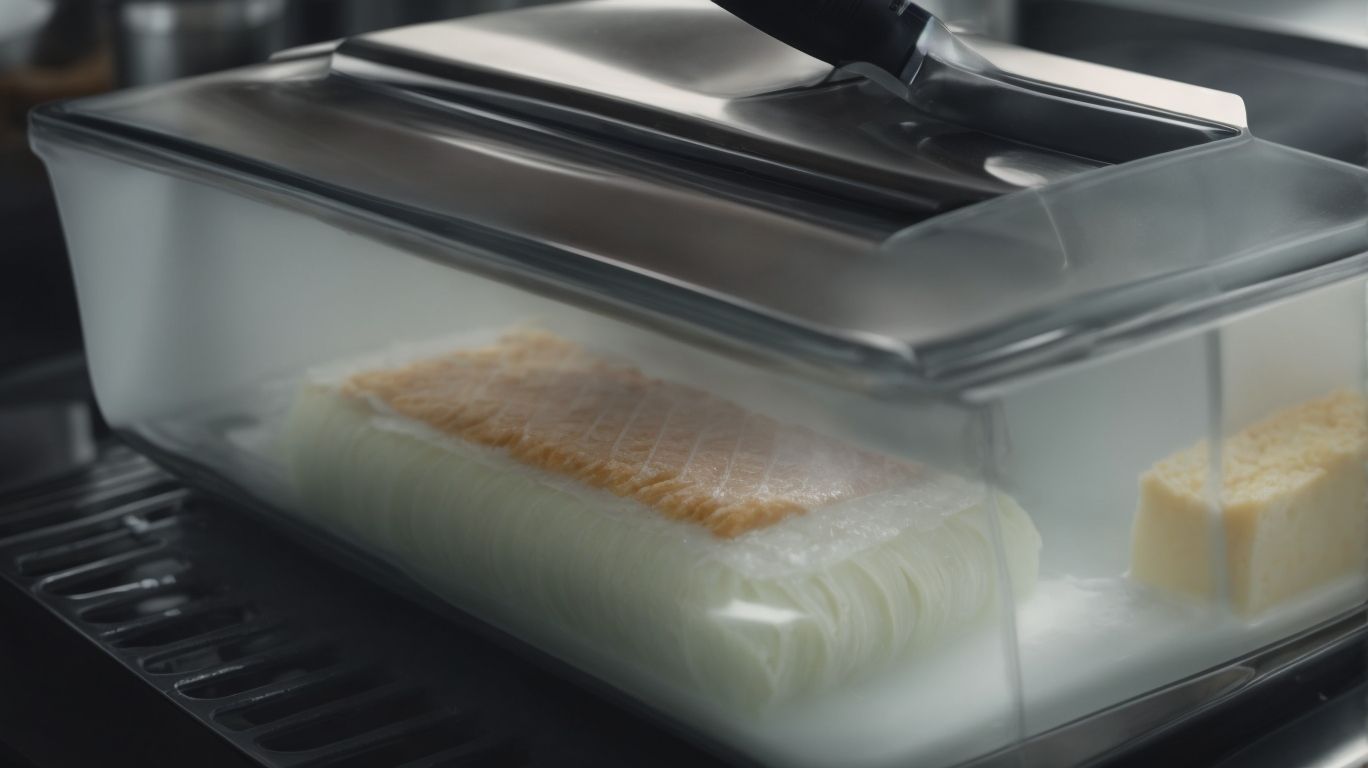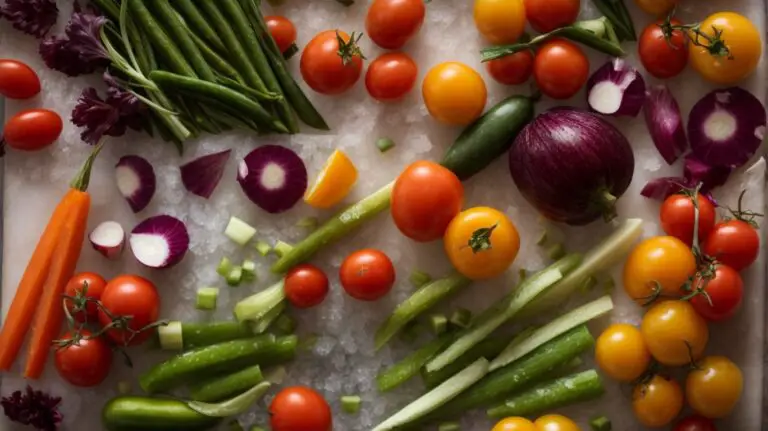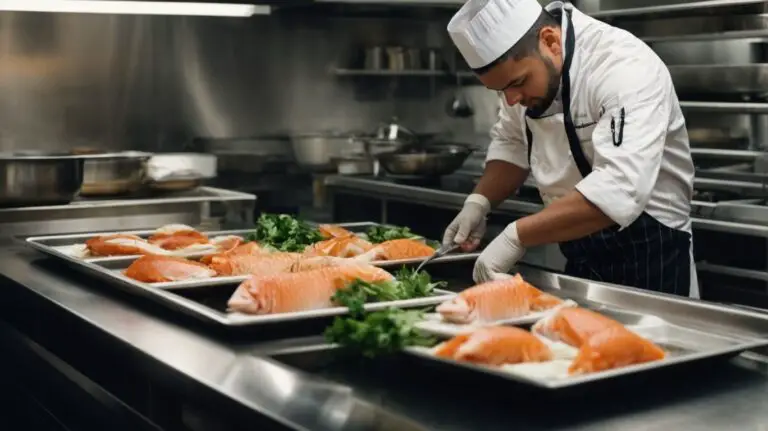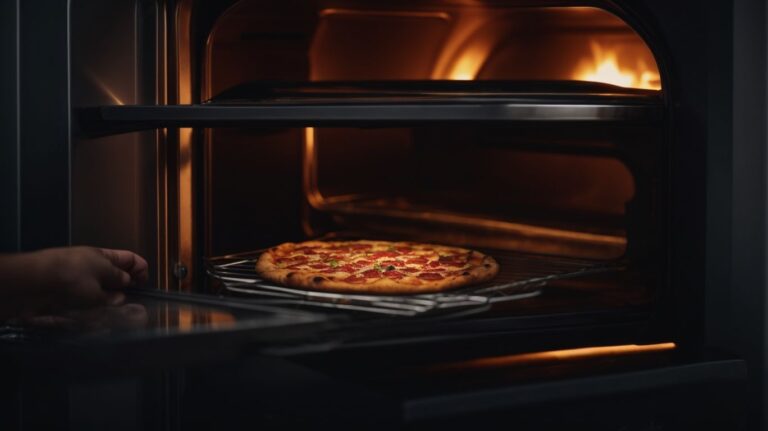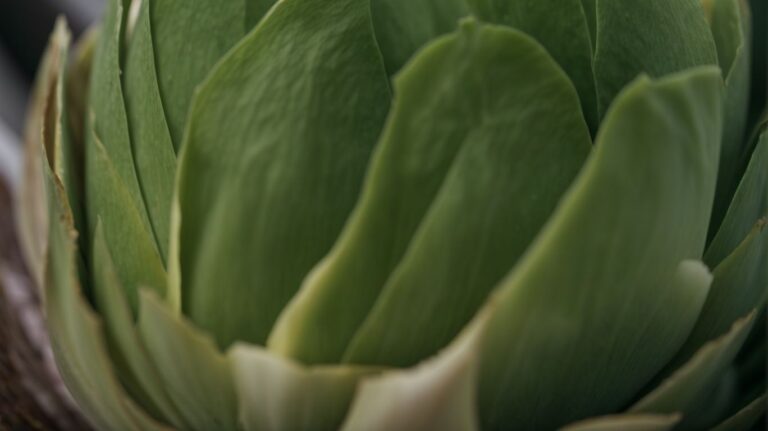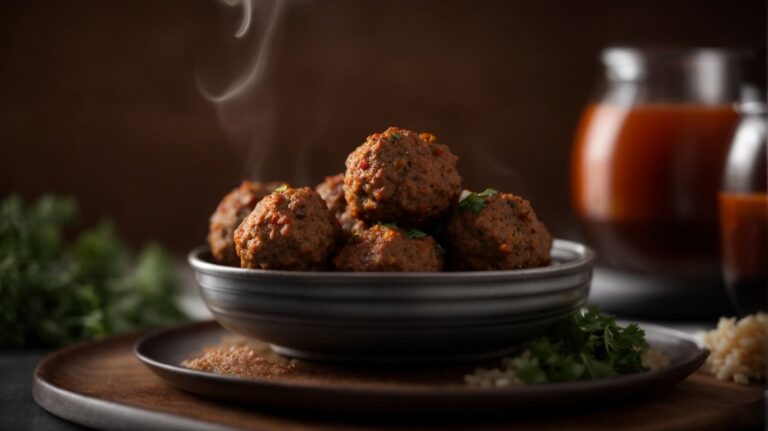How to Cook by Sous Vide?
Curious about the latest trend in cooking? Sous vide might just be the technique you’ve been looking for.
In this article, we’ll delve into the world of sous vide cooking, exploring how it works, its benefits, the equipment you need, and how to get started.
From precise temperature control to enhanced flavors, sous vide offers a unique way to cook your favorite foods. So grab your sous vide machine and let’s get cooking!
Key Takeaways:
What Is Sous Vide Cooking?
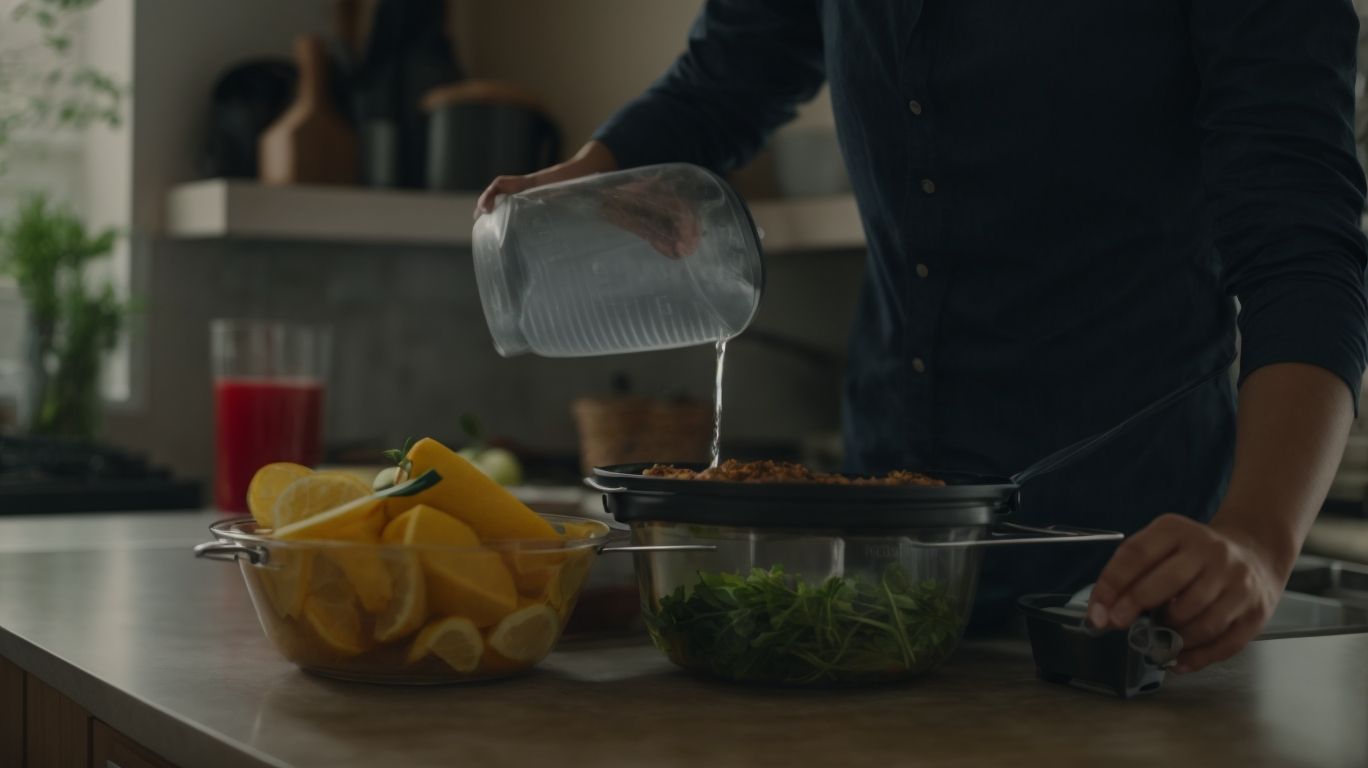
Credits: Poormet.Com – Jacob Baker
Sous Vide cooking is a culinary technique that involves cooking food in vacuum-sealed bags immersed in a precisely controlled water bath.
This cooking method, which translates to ‘under vacuum,’ was pioneered by Chef Georges Pralus in the 1970s. Sous Vide cooking offers a level of precision that ensures food is cooked evenly throughout without overcooking. The key tool used in this technique is an immersion circulator, a device that maintains the water at a consistent temperature. By cooking food at lower temperatures for longer periods, flavors are locked in, resulting in juicy and tender dishes. Popular in professional kitchens, home cooks are also embracing sous vide for its dependable and impressive results.
How Does Sous Vide Cooking Work?
Sous Vide Cooking works by sealing food in a vacuum-sealed bag and immersing it in a water bath with precise temperature control.
This method ensures that the food is cooked evenly from edge to edge, unlike traditional cooking methods that may lead to overcooking the outer layers while the inner parts remain undercooked. The immersion circulator plays a crucial role in sous vide cooking, as it maintains the water temperature at the desired level with high precision. Chef Georges Pralus is credited with inventing sous vide cooking, which has gained popularity for its ability to produce restaurant-quality dishes at home with consistent results.
What Are the Benefits of Sous Vide Cooking?
Sous Vide cooking offers several benefits, such as precise temperature control, even cooking, enhanced flavors, and nutrient retention.
One of the key advantages of sous vide cooking is how it enhances flavors. By vacuum-sealing your ingredients in a bag and cooking them at a precise temperature for a specified time, this method allows the flavors to develop and intensify. This process also ensures that the food is cooked evenly throughout, resulting in perfectly cooked dishes every time. Additionally, sous vide cooking helps retain the nutrients in the vegetables, unlike traditional cooking methods that can cause nutrient loss due to high heat. It’s no wonder that many top chefs swear by this technique for its ability to elevate the taste and quality of their dishes.
Precise Temperature Control
One of the key benefits of Sous Vide Cooking is the precise temperature control it offers, ensuring consistent and accurate cooking results.
The text is already formatted with HTML tags. No further formatting is required.
Even Cooking
Sous Vide Cooking delivers even cooking throughout the food, resulting in uniformly cooked dishes from edge to edge.
By placing the ingredients in a sealed bag and submerging them in a precisely controlled water bath, the sous vide method ensures that heat is evenly distributed around the food item. This gentle cooking process allows for consistent temperatures to penetrate the entire dish, eliminating the risk of overcooking or undercooking certain parts. This meticulous technique is particularly advantageous for home cooks seeking perfect results every time they prepare a meal, as it takes the guesswork out of achieving ideal doneness across proteins, vegetables, and even desserts.
Enhanced Flavor
Sous Vide Cooking enhances the natural flavors of ingredients, creating dishes that are exceptionally flavorful and aromatic.
When meats, seafood, and poultry are cooked using the sous vide method, the flavors are intensified through precision temperature control over an extended period. The technique allows the food to cook evenly in its juices, locking in moisture and enhancing taste profiles. This controlled cooking process ensures that the essential oils and juices are fully infused into the ingredients, resulting in rich and succulent dishes. The low and slow cooking method enables proteins to reach the precise doneness without overcooking, ensuring perfect texture and taste.
Retains Nutrients
Sous Vide Cooking helps retain vital nutrients in the food, preserving the nutritional value of ingredients during the cooking process.
This cooking method involves vacuum-sealing food in a bag and then cooking it in a precisely controlled water bath at a consistent low temperature. By cooking food in this manner, particularly vegetables and proteins, their natural flavors and nutrients are sealed in, rather than leaching out into the cooking liquid or the air.
Compared to traditional cooking methods, such as boiling or frying, where heat exposure can lead to nutrient loss, sous vide cooking preserves more of the vitamins and minerals. It’s a great way to ensure that your desserts, meats, and even vegetables retain their essential nutrients and flavors.
What Equipment Do You Need for Sous Vide Cooking?
To start Sous Vide Cooking, you will need essential equipment like a sous vide machine, vacuum sealer, sous vide bags, and a water bath container.
Plus these essential items, having a reliable kitchen thermometer, food-safe weights, and a lid for your water bath container can enhance your sous vide cooking experience. A kitchen torch or searing tool is also handy for finishing your dishes with a perfect sear post sous vide. Maintaining proper cleaning of your equipment is crucial for food safety and longevity of your tools.
Sous Vide Machine
A key piece of equipment for sous vide cooking is the sous vide machine, which regulates and maintains the water bath temperature with precision.
These machines have revolutionized the culinary world by providing a consistent and controlled environment for cooking various types of foods. Whether you opt for a renowned brand like Anova Culinary, Breville Joule Turbo, or any other trusted manufacturer, the core function remains the same: to ensure that your ingredients are cooked evenly and to perfection.
Originating from France, sous vide translates to ‘under vacuum,’ highlighting the method’s principle of vacuum-sealing food before immersing it in the precisely heated water. This technique not only enhances flavors but also preserves the nutrients and tenderness of the ingredients, resulting in restaurant-quality dishes from the comfort of your own kitchen.
Vacuum Sealer
A vacuum sealer is essential for sous vide cooking as it securely seals food in bags, removing air to ensure proper cooking and flavor preservation.
By creating an airtight seal, the vacuum sealer eliminates the presence of oxygen, reducing the risk of bacterial growth and spoilage in the food. This method not only enhances the flavors by locking in moisture and essential juices but also prevents any water ingress during the cooking process, maintaining the food’s integrity.
The use of a vacuum-sealed environment reduces the risk of phthalates, chemicals found in some plastics, leaching into the food, ensuring a safer cooking experience. This heightened level of food safety, paired with the convenience of precise temperature control, makes the vacuum sealer a vital tool for any sous vide enthusiast.
Sous Vide Bags
Sous vide bags are designed to withstand low and high temperatures, ensuring safe and effective cooking without compromising the food’s quality.
These specialized bags are crafted from high-quality materials that can handle the precise temperature control required in sous vide cooking. The durability of these bags ensures that they can be used repeatedly without the risk of leaking or tearing, providing a reliable cooking vessel for your culinary creations.
Whether you are using an immersion circulator or Cambro Containers for your sous vide setup, having the right sous vide bags is essential to maintain the integrity of your ingredients and achieve consistent results.
Water Bath Container
A water bath container is used in sous vide cooking to hold the water at a constant temperature, providing the ideal environment for precise cooking.
This kitchen tool plays a crucial role in maintaining a controlled and consistent heat source, allowing ingredients sealed in Lodge 12-Inch Pre-Seasoned Cast Iron Skillet bags to cook evenly. The water bath container also assists in enhancing food quality and taste by preserving essential nutrients and flavors during the Nesco VS-12 Deluxe Vacuum Sealer sealing process. It eliminates fluctuations in temperature, ensuring a tender, moist, and perfectly cooked dish every time.
How to Cook Sous Vide?
Cooking sous vide involves preheating the water bath, seasoning and sealing the food, placing it in the water bath, cooking for the recommended time, and finishing with searing or chilling.
To start the process, set your sous vide machine to the desired temperature based on the food you plan to cook. For succulent pork chops, aim for around 140°F (60°C), while eggs require 167°F (75°C). Before placing the items in the water bath, make sure to season them generously with salt, pepper, herbs, or any other preferred seasonings. Next, seal the items in a vacuum-sealed bag to ensure they cook evenly and retain their flavors. Carefully submerge the bags into the water bath using a clip to prevent floating. During the cooking process, periodically check that the water level remains stable.
Preheat the Water Bath
Before cooking sous vide, it’s essential to preheat the water bath to the desired temperature based on the food you’re preparing.
Preheating the water bath in sous vide cooking is crucial for achieving precise and consistent results. The temperature at which you preheat the water bath depends on the protein or ingredient being cooked and the desired doneness. For instance, delicate proteins like fish may require a lower temperature around 110°F to 130°F, while tougher cuts of meat might need a higher temperature between 130°F to 160°F.
Using tools like the Joule Turbo or Anova Precision Vacuum Sealer Pro can help maintain the water temperature accurately. Failure to preheat the water bath properly can lead to uneven cooking or overcooking, affecting the texture and flavor of the final dish.
Season and Seal the Food
Seasoning and properly sealing the food in sous vide bags are crucial steps to enhance flavors and ensure even cooking.
When using the sous vide method, the vacuum-sealing process not only locks in the flavors but also helps retain the natural juices, resulting in tender and succulent dishes. This technique is particularly beneficial when cooking delicate seafood such as shrimp and lobster, as it prevents the loss of moisture and the exchange of flavors with the surrounding water. Tools like the Anova precision cooker are popular choices for home cooks looking to achieve professional-quality results in their culinary creations.
Place in the Water Bath
Once seasoned and sealed, place the food in the preheated water bath, ensuring it’s fully submerged for consistent cooking.
Proper submersion is crucial for efficient heat transfer during sous vide cooking. The immersion circulator plays a vital role in maintaining a precise water temperature, creating a controlled environment for the food to cook evenly. Remember, the ideal temperature may vary depending on the type of food being prepared, so refer to specific recipes for guidance. Utilizing sous vide cooking can lead to tender and flavorful dishes, differentiating it from the more traditional cooking methods.
Cook for the Recommended Time
Cook the food for the recommended duration based on the recipe or desired doneness level, maintaining a consistent temperature throughout the cooking process.
When preparing vegetables through the sous vide method, it is essential to adhere to the precise cooking times and temperatures to achieve optimal results. Vegetables, with their delicate textures and flavors, require careful attention to detail to ensure they are cooked to perfection. The key to unlocking the full flavor potential of vegetables lies in maintaining the right temperature and time combination.
By following specific guidelines for each type of vegetable, you can create dishes that are not only visually appealing but also retain nutrients and flavors that are often lost through traditional cooking methods. For example, cooking asparagus at 85°C for 15-20 minutes results in tender spears that are vibrant green and packed with flavor.
Finish with Searing or Chilling
After cooking sous vide, finish the dish by searing it for a crispy exterior or chilling it for certain recipes to achieve the desired texture.
For those looking for a caramelized crust on their protein, searing is the way to go. Simply pat the meat dry and sear it in a hot pan or on a grill for a few minutes on each side. This not only adds a delightful crunch but also enhances the flavors developed during the sous vide process.
Conversely, if you prefer a silky and tender texture, chilling the sous vide-cooked item can be key. Placing the pouch in an ice water bath or refrigerator rapidly cools the food, preserving its juiciness while setting its consistency. This method is especially popular with desserts, such as custards or mousses, where a firmer set is desired.
What Foods Can You Cook with Sous Vide?
Sous Vide cooking allows for a wide variety of foods to be prepared, including meats, poultry, seafood, vegetables, eggs, and even desserts.
This method is highly versatile and beloved by top chefs for its precision in achieving perfect results. Some popular items often cooked through Sous Vide include succulent pork chops, tender carrots infused with herbs, and flavorful shrimp cooked to perfection.
Meat and Poultry
Sous Vide is ideal for cooking meats and poultry as it ensures optimal doneness and retains the natural juices for tender and flavorful results.
This cooking method involves vacuum-sealing proteins in a pouch and immersing them in a precisely controlled water bath, ensuring precision in temperature. By cooking at a consistent low temperature over an extended period, sous vide allows the meat to cook evenly from edge to edge. This leads to a superior texture, making even tougher cuts tender. As the juices and flavors are trapped in the pouch during cooking, the end result is exceptionally succulent and flavorful.
Seafood
Seafood can be perfectly cooked with sous vide, preserving delicate textures and flavors that are often challenging to achieve through other methods.
Utilizing an immersion circulator in sous vide cooking guarantees precise temperature control, allowing the seafood to reach the exact doneness desired without any risk of overcooking. This method also helps retain moisture in the seafood, resulting in a tender and juicy final product.
The gentle cooking process in sous vide effectively infuses flavors into the seafood, creating a depth of taste that is unparalleled. Whether you’re preparing delicate fish fillets or shellfish, the consistent and controlled environment of sous vide ensures that every bite is packed with the pure essence of the seafood flavors.
Vegetables
Sous Vide Cooking vegetables retains their natural flavors, textures, and nutrients, elevating them to a new level of taste and enjoyment.
Through the precise control of temperature in a water bath, sous vide cooking ensures that vegetables are cooked evenly, without the risk of overcooking or losing their essential vitamins and minerals. This method allows the vegetables to retain their vibrant colors, firm textures, and distinct flavors, unlike traditional cooking methods that can sometimes lead to mushy or dull vegetables.
The slow, gentle cooking process of sous vide enhances the natural sweetness and subtle complexity of vegetables, creating a more satisfying and nutritious dining experience.
Eggs
Sous Vide Eggs are a popular choice due to their consistent and creamy texture, making them versatile for breakfast, salads, or as standalone dishes.
Cooking eggs sous vide involves placing eggs in a water bath at a precise temperature, resulting in a perfectly cooked white and a velvety yolk every time. The controlled environment of the sous vide method ensures that the eggs cook evenly, retaining their moisture and flavor. Many top chefs swear by this technique for achieving the ideal consistency in their dishes. This cooking method not only offers incredible precision but also allows for experimentation with different seasonings and additions to elevate the humble egg to new heights.
Fruits
Sous Vide is a unique way to enhance fruits for desserts, infusing them with flavors and textures that traditional cooking methods may not achieve.
When fruits are cooked sous vide, the controlled temperature and extended cooking times result in a more concentrated flavor profile, as the natural sugars caramelize gradually. The fruits retain their vibrant colors and firm textures, offering a visually appealing presentation in the final dessert. The sous vide method ensures that the fruits are cooked in sealed bags, promoting cleanliness and preventing any cross-contamination, which is particularly important when working with delicate fruits like berries.
How to Get Started with Sous Vide Cooking?
To begin your sous vide journey, research and gather the necessary equipment, find recipes to experiment with, practice proper food safety measures, and enjoy your culinary creations.
When looking into the world of sous vide cooking, it’s essential to understand the significance of each step involved in the process. Before diving in, aspiring sous vide enthusiasts must meticulously research the technique, including the cooking times and temperatures required for different foods. Proper equipment is crucial, so ensure you have a reliable immersion circulator, vacuum sealer, and heat-safe containers. Experimenting with various recipes will not only expand your culinary skills but also allow you to personalize dishes to your taste preferences.
Tip: Cleaning your sous vide equipment thoroughly after each use will help maintain its performance and prolong its lifespan. Follow the manufacturer’s instructions for proper care and maintenance to ensure your equipment remains in top condition.
Research and Gather Equipment
Start by researching sous vide cooking, gathering essential equipment like a sous vide machine and vacuum sealer, and familiarizing yourself with the process.
Exploring sous vide cooking involves understanding the precise control over cooking temperature that this method offers, leading to consistently delicious results. One popular tool for home cooks, the Anova Precision Cooker, simplifies the sous vide process with its user-friendly interface and reliable performance.
Investing in a vacuum sealer is crucial to ensure proper food packaging for sous vide cooking. Creating a vacuum-sealed environment allows ingredients to cook evenly and retain their flavors without any loss of moisture or nutrients.
Find Recipes and Experiment
Explore various sous vide recipes, experiment with different ingredients and cooking times, and adapt techniques to suit your preferences.
Many top chefs swear by the precision and consistency of sous vide cooking, which involves sealing food in airtight bags and cooking them in a temperature-controlled water bath. This method ensures that your dishes come out perfectly cooked every time, retaining their natural flavors and nutrients. By following expert recommendations and adjusting cooking times according to your desired level of doneness, you can achieve restaurant-quality results in the comfort of your own kitchen.
Practice Proper Food Safety Measures
Prioritize food safety when cooking sous vide by ensuring proper handling, storage, and cooking temperatures to prevent contamination and ensure safe consumption.
Regarding meat in sous vide cooking, maintaining consistent temperatures is crucial for eliminating harmful bacteria. The cooking process involves vacuum-sealing ingredients in plastic pouches and immersing them in a water bath at precise temperatures for extended periods. This low-temperature cooking method, popular among home cooks, provides a unique opportunity for tender, flavorful dishes but requires strict adherence to food safety guidelines. Home cooks must be vigilant in handling, storing, and monitoring temperatures throughout the entire process to minimize any risks of foodborne illnesses.”
Enjoy Your Sous Vide Creations!
Once you’ve mastered sous vide cooking, savor the delicious and precisely cooked dishes you create, and share your culinary delights with friends and family.
When you indulge in sous vide cooking, every bite of your creation becomes a moment to cherish, a celebration of culinary artistry achieved through precision and technique. The beauty of this cooking method lies in the consistent and uniform results it delivers, ensuring that each dish reaches its perfect doneness without compromise.
Imagine the joy of serving a tender, succulent piece of meat that has been bathed in flavorful herbs and spices for hours, emerging from its precise cooking environment as a masterpiece of taste and texture.
Bringing this level of cleanliness and sophistication to your kitchen elevates not just the dishes you prepare, but also the dining experience shared with those closest to you.
Frequently Asked Questions
How to Cook by Sous Vide?
What is sous vide cooking?
Sous vide is a cooking technique that involves vacuum-sealing food in a plastic bag and cooking it in a temperature-controlled water bath.
How to Cook by Sous Vide?
Do I need any special equipment to cook by sous vide?
Yes, you will need a sous vide machine or immersion circulator, vacuum sealer, and plastic bags that are safe for cooking.
How to Cook by Sous Vide?
What are the benefits of cooking by sous vide?
Cooking by sous vide allows for precise temperature control, resulting in perfectly cooked food every time. It also helps retain the natural juices and flavors of the food.
How to Cook by Sous Vide?
Is sous vide cooking safe?
Yes, sous vide cooking is safe as long as proper food safety measures are followed, such as using food-safe plastic bags and cooking food to the recommended temperature.
How to Cook by Sous Vide?
Can any type of food be cooked by sous vide?
Yes, sous vide cooking can be used for a wide variety of foods, including meats, seafood, vegetables, and even desserts.
How to Cook by Sous Vide?
Are there any tips for beginners cooking by sous vide?
It’s important to properly season your food before vacuum-sealing it and to ensure that the plastic bags are properly sealed before cooking. Additionally, it’s important to follow recommended cooking times and temperatures for different types of food.

